As the Chinese economy continues to grow, interest in the EUR/RMB is increasing despite the risk associated with the pair. After all, with all the risk, there is potentially more to be made.
To trade EUR/RMB or EUR/CNY:
- Find a forex broker and open a trading account
- Choose a trading platform
- Analyze the EUR/RMB or EUR/CNY pair and create a trading strategy
- Decide to sell or buy
- Open your trade and add orders to manage your risk
- Observe and close the position
With enough liquidity and volatility to make trading worthwhile, many traders are jumping onto the EUR/RMB trading bandwagon. Let’s look at the ins and outs of the pair, including its characteristics and how it behaves in the forex market.
Table of Contents
Currency Pair Chart and Profile
EUR/RMB refers to the pairing of the euro and the Chinese renminbi. The EUR is the European Union’s monetary unit and the currency of the European Union (EU) member states known as the Eurozone. It is the second-most traded currency after the U.S dollar.
The renminbi is China’s official currency. Each unit of this currency is known as the yuan (CNY), however, it’s common for the terms renminbi and yuan to be used interchangeably. The relationship between the renminbi and the yuan is similar to that of the British pound sterling and the pound. Britain’s official currency is the pound sterling, but prices are simply expressed in pounds. The pound is the unit of the currency.
The economies behind EUR/RMB
The EU economy is the second-largest in the world and it’s heavily reliant on the region’s services industry. The Eurozone’s central bank, the European Central Bank (ECB), is the main body responsible for issuing the euro in addition to making monetary policy decisions.
When it comes to individual countries, China comes second in world GDP rankings. The country is the largest exporter in the world and it’s often referred to as the “world’s factory.” It mainly exports goods to the U.S., Japan, South Korea, and Hong Kong. Furnishings, textiles, machinery, and clothing make up the bulk of these exports.
China is also a major importer and it relies mostly on the U.S., Japan, South Korea, Taiwan, Germany, Australia, and New Zealand for these imports. Some of the goods imported by China include oil, metal ores, agricultural produce, medical equipment, machinery, and motor vehicles. The People’s Bank of China (PBoC) is China’s central bank which is responsible for carrying out and regulating monetary policy.
What influences the movement of EUR/RMB?
The movement of EUR/RMB is influenced by movements in both the EUR and RMB.
The euro side of the EUR/RMB pair tends to be affected by:
- Socio-economic and political developments in Eurozone countries including elections, employment rates, national debt levels, budget deficits, and individual country GDP rankings.
- The monetary policy set by the ECB.
- Domestic and foreign policies that affect Eurozone member states.
The Chinese side of EUR/RMB is normally affected by three factors:
- Interventions by the PBoC. The central bank tends to regulate its currency more directly compared to other countries’ central banks.
- The state of China’s economy. Any growth, or lack thereof, of the Chinese economy, influences the value of the renminbi.
- The correlation with the economy of the U.S. Since the U.S. is one of China’s largest trade partners, any U.S. data releases and the relationship between the two countries affects the value of the renminbi.
Is EUR/RMB an exotic pair?
To be deemed exotic, a currency pair should comprise one major currency and the currency of an emerging or developing market. EUR/RMB pairs a major currency (the EUR) with the RMB which is a developing economy currency and so it is an exotic pair.
Pros of trading EUR/RMB
The EUR/RMB is piquing the interest of many traders, and for good reason.
- The EUR/RMB exotic pair is highly volatile, particularly due to the interventions by China’s central bank. This provides more opportunities to capitalize on the wider price swings and potentially make more profit.
- Compared to major and minor forex pairs, EUR/RMB has a lower trading volume and a somewhat slower trading pace. As a result, it’s relatively easier to predict the pair’s longer-term price action.
- Because it’s a unique pair, EUR/RMB provides different opportunities for traders. Many traders tend to stick to the major pairs, however, trading EUR/RMB exposes you to different factors that are not bound to the fundamentals that affect the major, or even the minor currency pairs. This can give you an edge in the forex market.
Cons of trading EUR/RMB
- The volatility of the EUR/RMB pair is double-edged – it can potentially increase your probability of succeeding in the market, but it also increases your risk.
- Because EUR/RMB is an exotic pair, its trading volumes are usually low. Consequently, the pair sometimes lacks the liquidity and market depth of the major currency pairs.
- The lower liquidity and relatively higher volatility of the EUR/RMB exotic pair can attract a higher cost of trading.
- Trading EUR/RMB may not be suited to beginner traders. Beginner traders usually stick to major and minor currency pairs. Compared to EUR/RMB, these pairs generally have tighter spreads and relatively lower risk.
The Best Time to Trade EUR/RMB
The PBoC announces the official midpoint reference for the yuan against the U.S. dollar every day at 1.15 am GMT. This coincides with the Asian session. On the other side, the Eurozone’s economic data is normally made available at 6 am GMT when the European session starts. Most euro trading happens from this time until 9 am GMT.
The time with the greatest EUR/RMB trading volume and market movement will likely be when there’s an overlap between the Asian and London sessions.
Best Trading Strategies for EUR/RMB
Trading an exotic pair such as EUR/RMB usually requires a long-term strategy. This is because the pair’s higher cost of trading will require a longer-term profit outlook to make the trading worthwhile. Here are some top strategies to consider for trading EUR/RMB.
Trend trading
This strategy involves identifying a currency pair’s overall trend and going either long or short depending on the trend’s direction.
When the currency pair is in a downtrend, you can go short, selling when the price goes above the moving average. Conversely, during an uptrend, you can go long, buying when the price of the EUR/RMB pair moves below the average.
Range trading
The range trading strategy involves trading a currency pair within a range of resistance and support levels. With range trading, you pay close attention to the price of the currency pair as it nears the level of support or resistance.
The assumption is that when the price reaches the support level, it will jump back up, so you could go long when the price nears this level. Similarly, the idea is that once the price reaches the resistance level, it will start going down, so you could go short as the price nears this level.
The biggest downside to trading ranges is that range resistance and support are susceptible to potential breakout. Fortunately, with EUR/RMB, you can also trade the breakouts.
Breakout trading
In the forex market, a breakout occurs when the price of a currency pair moves beyond a certain level. When trading a breakout, you enter trades when the market momentum is in your favor.
The breakout trading strategy relies on using both fundamental and technical analysis to forecast a currency pair’s movement once historical support and resistance fail to hold and the price breaks through. It’s important to remember, however, that with breakout trading, there’s always the risk of false breakouts.
The Chinese yuan remains largely pegged to the U.S. dollar. As such, EUR/RMB tends to follow accordingly as the value of the U.S. dollar rises or falls.
China’s economic events are also likely to impact the economies of its major trade partners such as Australia and New Zealand. For example, strong Chinese economic data can signal higher demand for Australian and New Zealand commodities and this can have an impact on AUD and NZD currency pairs.
The EU is another one of New Zealand and Australia’s biggest trade partners so the EUR side of the EUR/RMB pair will also likely influence the movement of AUD and NZD currency pairs.
Correlation of EUR/RMB with other commodities
China is a key participant in the global commodity markets, therefore, the country’s economic state can have a big impact on commodity prices, including those of oil and some base metals.
Related Questions
How much is $100 US in China?
To determine the amount of Chinese Yuan you get with US$100, use the prevailing exchange rate. For instance, if the USD/CNY exchange rate is 6.7813, then $100 is worth 678.13 Chinese yuan (6.7813 x $100).
Is there a price difference between CNY and CNH?
Although the CNY yuan and CNH yuan are listed separately, they both represent the price of the Chinese renminbi. The denotation depends on whether the renminbi is listed on or outside mainland China, i.e. onshore or offshore. The CNY abbreviation is used when the renminbi is listed onshore and the CNH abbreviation when the renminbi is listed offshore.
Because both CNY yuan and CNH yuan represent the same currency, they have a strong correlation. In fact, the curves of the EUR/CNY and EUR/CNH graphs follow each other closely in most cases.

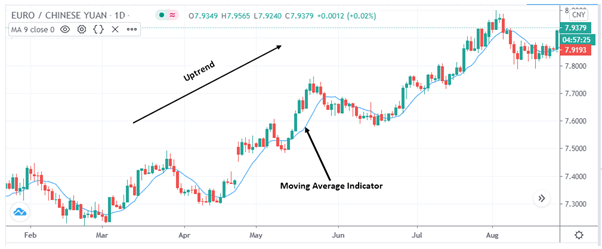
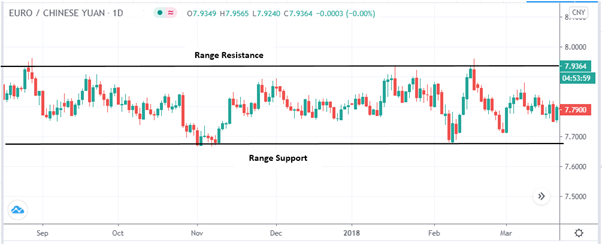

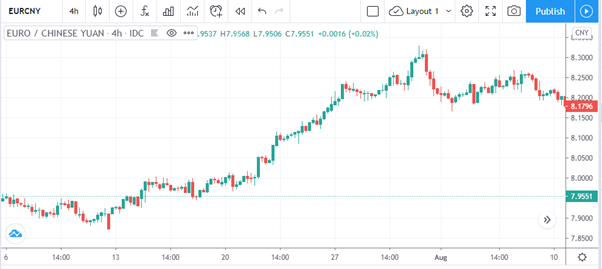
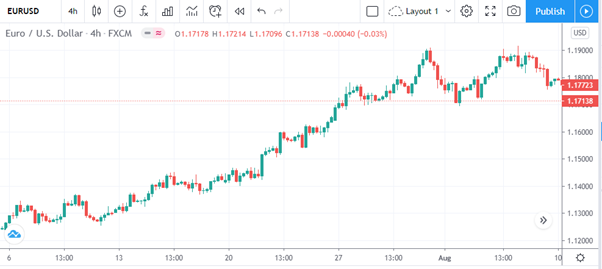
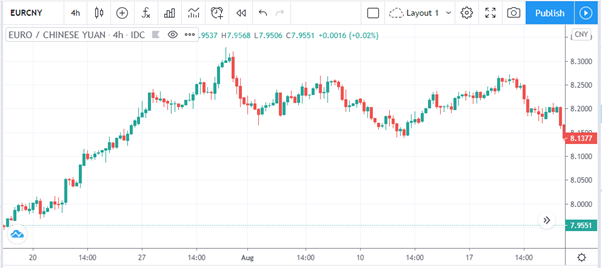
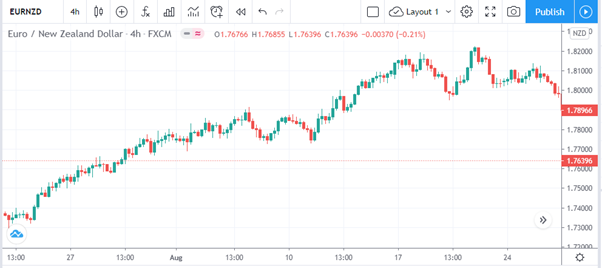
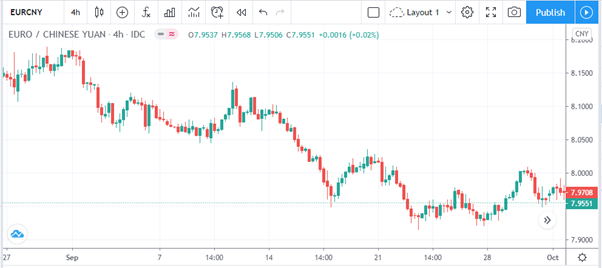
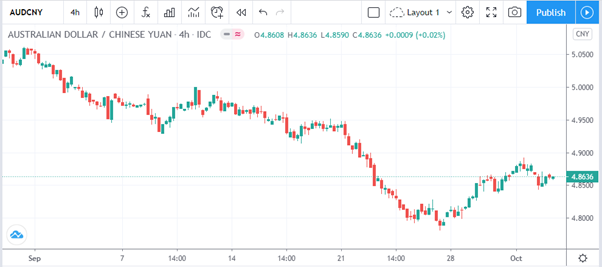
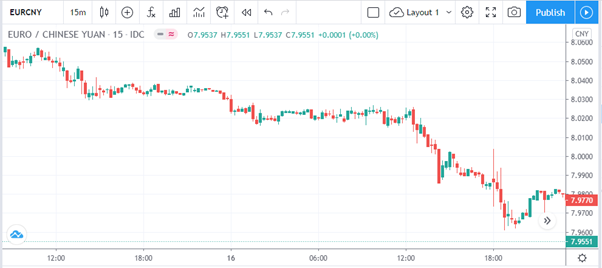







Leave a Reply